Challenges

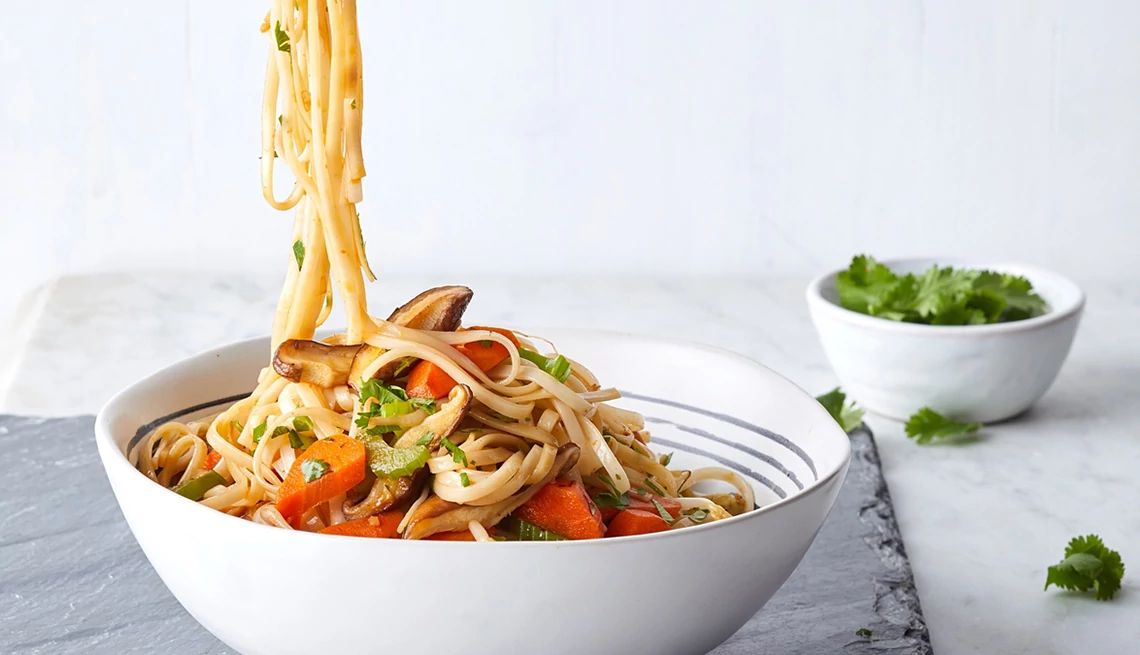
Learn strategies to help improve your heart health by following this delicious seven-day diet plan.
High cholesterol is a common issue—more than half of all Americans have it. But that doesn't mean it shouldn't be taken seriously. High cholesterol levels raise your risk for heart disease. High cholesterol was even added as a risk factor for dementia in 2024, by the Lancet Commission on dementia prevention, intervention and care. While genetics can play a role in your LDL numbers (this is the “bad” cholesterol you’re aiming to lower), it’s possible to lower your cholesterol levels through lifestyle changes, such as getting more active, quitting smoking and eating foods that benefit your cholesterol. Your healthcare provider will be able to advise you on approaches to lower your cholesterol levels if they rise too high. The main tips for eating well when you have high cholesterol are to boost your fiber intake, swap saturated fats for heart-healthy unsaturated fats (think olive oil rather than butter), and eat more whole foods, like fruits, vegetables, whole grains, beans, and lentils, nuts and seeds. These tips form the foundation of this meal plan.
How We Create Meal Plans
Registered dietitians thoughtfully create these meal plans to be easy-to-follow and delicious. Each meal plan meets specific parameters depending on the health condition and/or lifestyle goal it is targeting and is analyzed for accuracy using the nutrition database, ESHA Food Processor. As nutritional needs differ from person to person, we encourage you to use these plans as inspiration and adjust as you see fit.
More About This Meal Plan
Finding out that you have high cholesterol can leave you with many questions: How did this happen? What should I eat? How do I lower high cholesterol? In this heart-healthy meal plan to help lower your cholesterol, we map out seven days of meals and snacks to jump-start a healthy lifestyle change. There are two calorie levels: 1,500 or 2,000 calories, depending on your calorie needs and satiety levels.
Download this meal plan's shopping lists.
What Causes High Cholesterol?
You can blame a mix of genetics, diet and lifestyle for your high cholesterol. When we talk about lowering your cholesterol, we are referring to LDL cholesterol, which is often referred to as "bad cholesterol." This type of cholesterol is responsible for the artery-clogging plaque that increases risk of stroke and heart attack. Although genetics can play a role in your LDL numbers, it's important to look at factors that you have the ability to control. Higher body weight, lack of exercise, smoking and nutrition can all play a role.
What Are Some High Cholesterol Symptoms?
Unfortunately, high cholesterol is a silent disease, which means it has no symptoms. The only way to know if you have high cholesterol is to get a blood test from a medical provider.
High Cholesterol Diet Guidelines
High cholesterol levels are often treated with a combination of prescription medication and diet and lifestyle changes. These healthy eating tips can help lower your cholesterol to a safe level with or without the use of medication, depending on your individual needs. When you combine these basic high-cholesterol diet guidelines with other healthy lifestyle habits, like exercising daily, not smoking, and drinking less alcohol, you are more likely to see your health improve and cholesterol levels return to a healthy range even faster.
Be Selective with Your Fats
Though it sounds backward, foods high in dietary cholesterol, such as shrimp and eggs, don't actually seem to raise our body's cholesterol levels. To lower your cholesterol, limit foods with saturated fats — like red meat, processed meats (such as hot dogs and sausage), cheese and other high-fat dairy items. Instead, go for leaner white meat like chicken and turkey and plant-based protein options like tofu and beans.
Some may want to switch over to low-fat dairy products, although there is some evidence that the type of saturated fat in dairy might not contribute to heart disease as much as we previously thought. Regardless, you'll want to include more heart-healthy fats from foods like salmon, avocados, olive oil, nuts and seeds, which help to improve cholesterol levels.
A step that can have an even larger impact on lowering cholesterol levels is eliminating foods made with hydrogenated fats and partially hydrogenated fats — also known as trans fats — which are highly processed fats commonly found in shelf-stable baked foods and processed peanut butter. The U.S. Food and Drug Administration banned food manufacturers from adding trans fats as of January 2020, but you should still check ingredient lists and avoid products with hydrogenated or partially hydrogenated fats listed.
Up Your Fiber Intake
Increasing your fiber intake can help lower your cholesterol. We do this for you in the meal plan below. Every day of the plan contains about 30 grams of fiber, which is the recommended daily amount, according to the 2020-2025 Dietary Guidelines for Americans. Good sources of fiber are fruits and vegetables, whole grains, like oatmeal and brown rice, as well as beans and lentils.
Eat More Whole Foods
By eating more whole foods, like fruits, vegetables, whole grains, beans and lentils, nuts and seeds, and other healthy fats, there will be less room for the not-as-healthy foods that can increase cholesterol levels or contribute to other heart-related issues.
Meal-Prep Ideas
- Prepare Meal-Prep Turkey Cobb Salad to have for lunch on Days 2 through 5.
- Make the Citrus Vinaigrette to have throughout the week.
- Bake a batch of the Maple Granola to have throughout the week.
Disclaimer:
Note: Consider speaking with your health-care provider about whether this plan is suitable for your individual nutrition needs.
1,500-Calorie Plan
Day 1

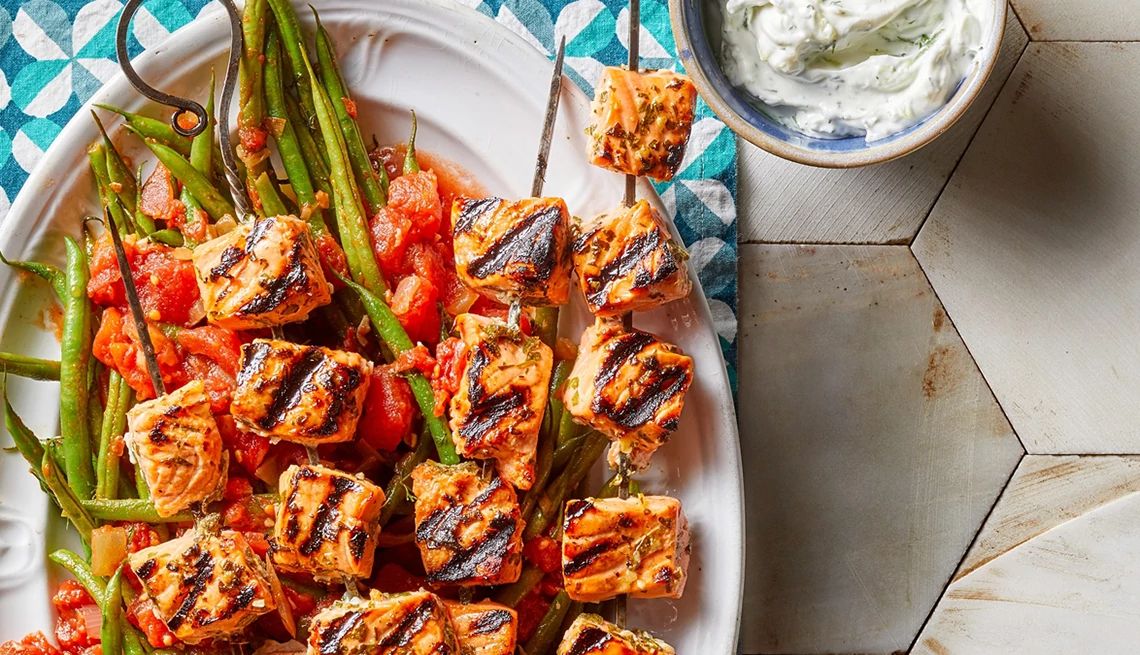
Breakfast (467 calories)
- 1 serving Strawberry-Pineapple Smoothie
- ¼ cup dry roasted unsalted almonds
A.M. Snack (59 calories)
- 1 medium peach
Lunch (426 calories)
- 1 serving Veggie & Hummus Sandwich
- 1 medium pear
P.M. Snack (105 calories)
- 8 walnut halves
Dinner (458 calories)
Day 2


Breakfast (311 calories)
- 1 cup nonfat Greek yogurt
- ½ cup blackberries
- ⅓ cup Maple Granola
A.M. Snack (64 calories)
- 1 cup raspberries
Lunch (466 calories)
- 1 serving Meal-Prep Turkey Cobb Salad
- ½ avocado, chopped
- 1 plum
P.M. Snack (262 calories)
- ⅔ cup blueberries
- ¼ cup unsalted dry-roasted almonds
Dinner (403 calories)
- 1 serving Vegetarian Lo Mein with Shiitakes, Carrots & Bean Sprouts
- 2 cups mixed greens
- 1 Tbsp. Citrus Vinaigrette
Meal-Prep Tip: Prepare 1 serving of Date & Pine Nut Oatmeal to have for breakfast tomorrow.
Day 3

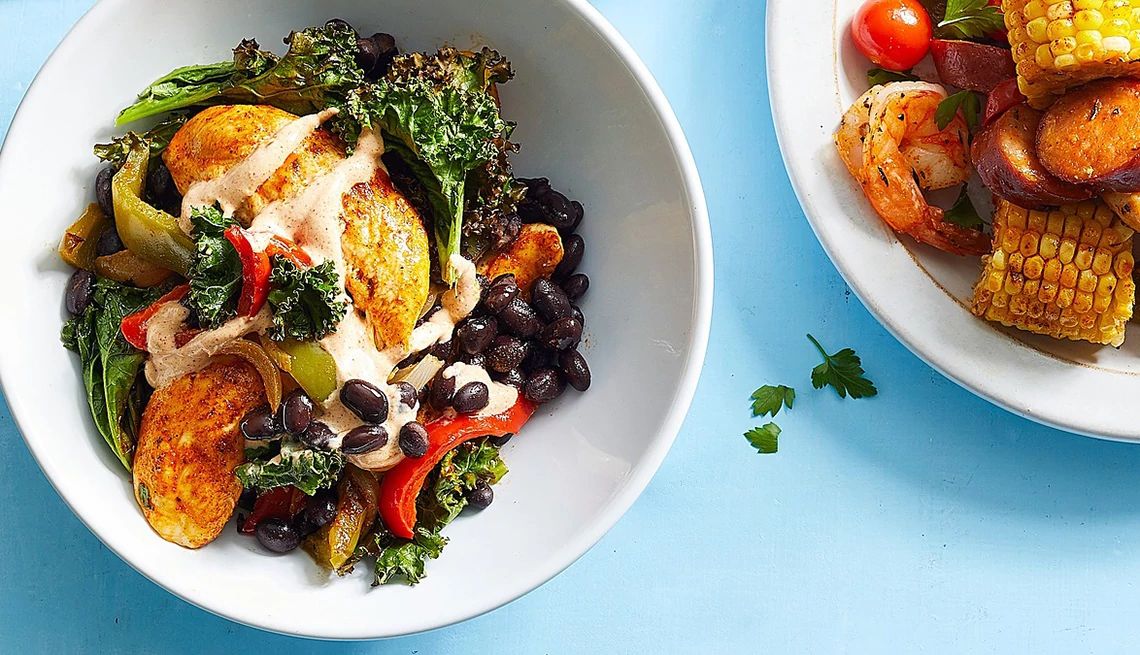
Breakfast (282 calories)
- 1 serving Date & Pine Nut Oatmeal
A.M. Snack (101 calories)
- 1 medium pear
Lunch (466 calories)
- 1 serving Meal-Prep Turkey Cobb Salad
- ½ avocado, chopped
- 1 plum
P.M. Snack (162 calories)
- ½ cup blackberries
- 10 walnut halves
Dinner (464 calories)
- 1 serving Sheet-Pan Chicken Fajita Bowls
- 1 serving Avocado-Cilantro Guacamole
Day 4

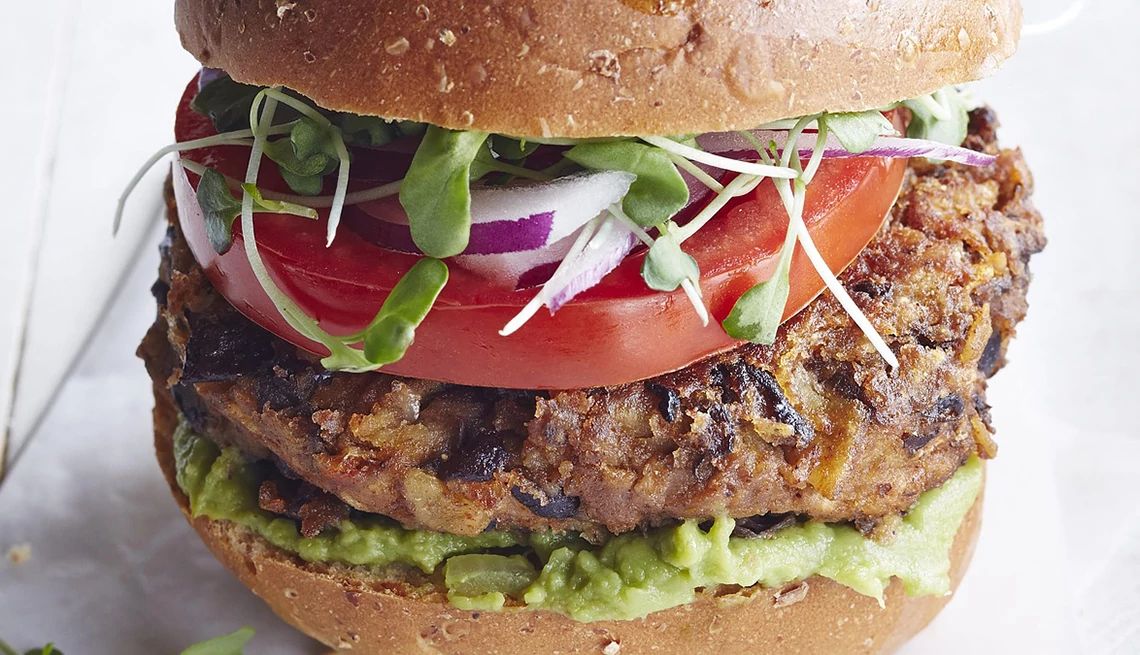
Breakfast (311 calories)
- 1 cup nonfat plain Greek yogurt
- ½ cup blackberries
- ⅓ cup Maple Granola
A.M. Snack (163 calories)
- 1 peach
- 8 walnut halves
Lunch (466 calories)
- 1 serving Meal-Prep Turkey Cobb Salad
- ½ avocado, chopped
- 1 plum
P.M. Snack (64 calories)
- 1 cup raspberries
Dinner (505 calories)
- 1 serving Salsa-Black Bean Burgers
- 1 serving Grilled Sweet Potato Wedges
Meal-Prep Tip: Prepare 1 serving of Date & Pine Nut Oatmeal to have for breakfast tomorrow.
Day 5

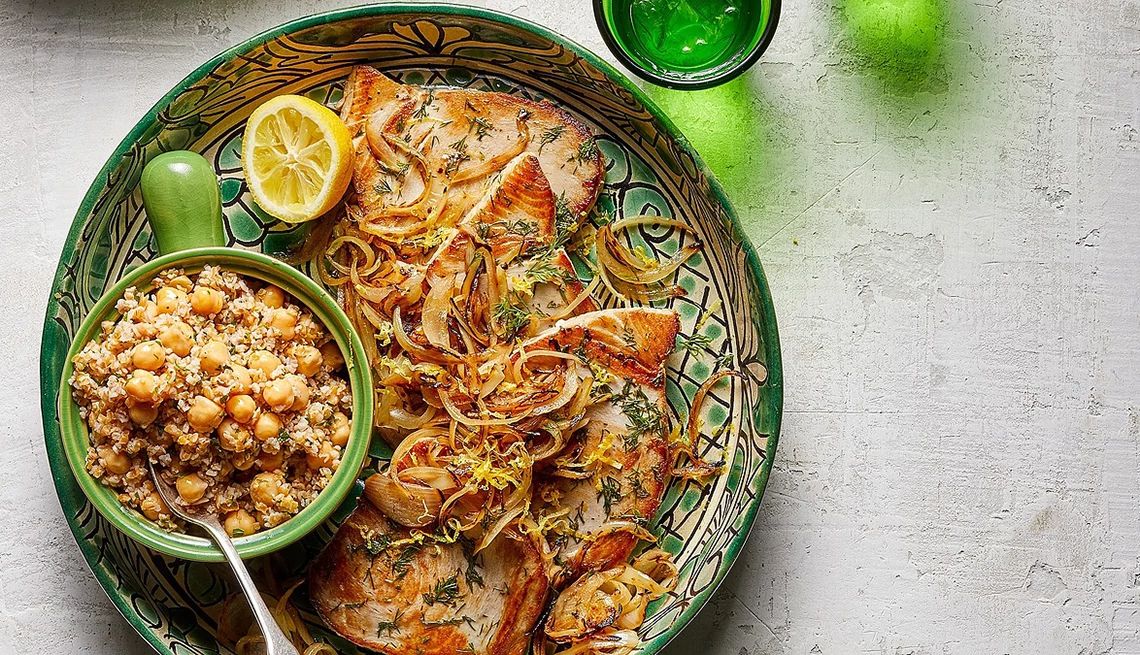
Breakfast (281 calories)
- 1 serving Date & Pine Nut Oatmeal
A.M. Snack (41 calories)
- ⅔ cup blackberries
Lunch (466 calories)
- 1 serving Meal-Prep Turkey Cobb Salad
- ½ avocado, chopped
- 1 plum
P.M. Snack (237 calories)
- ⅔ cup raspberries
- 1 5-oz. container nonfat plain Greek yogurt
- ¼ cup Maple Granola
Dinner (459 calories)
- 1 serving Seared Tuna with Bulgur & Chickpea Salad






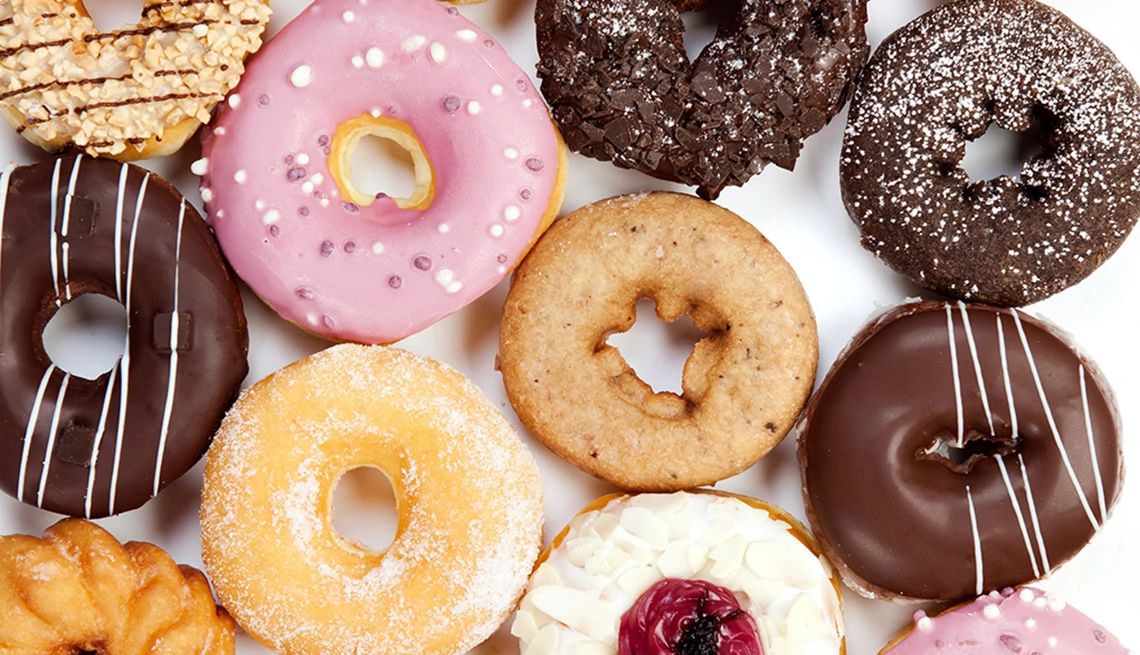

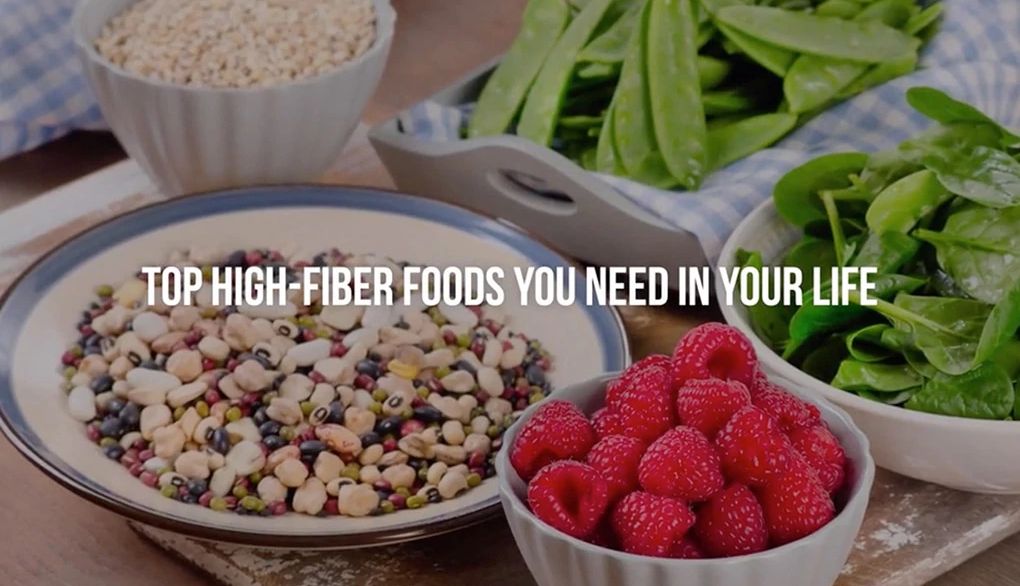
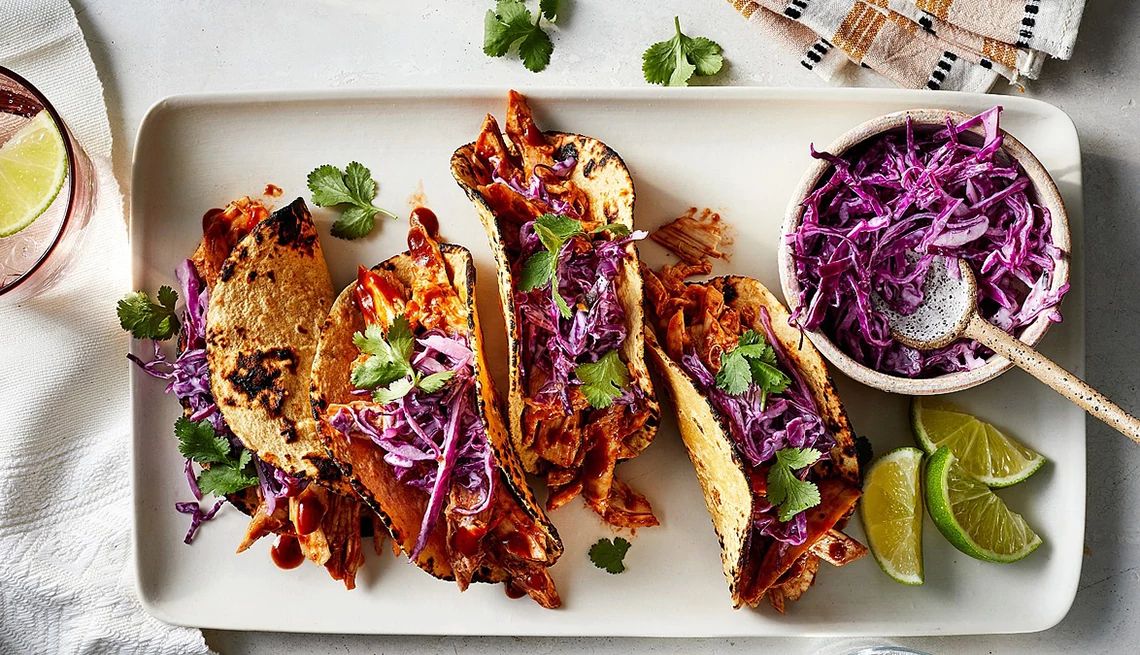
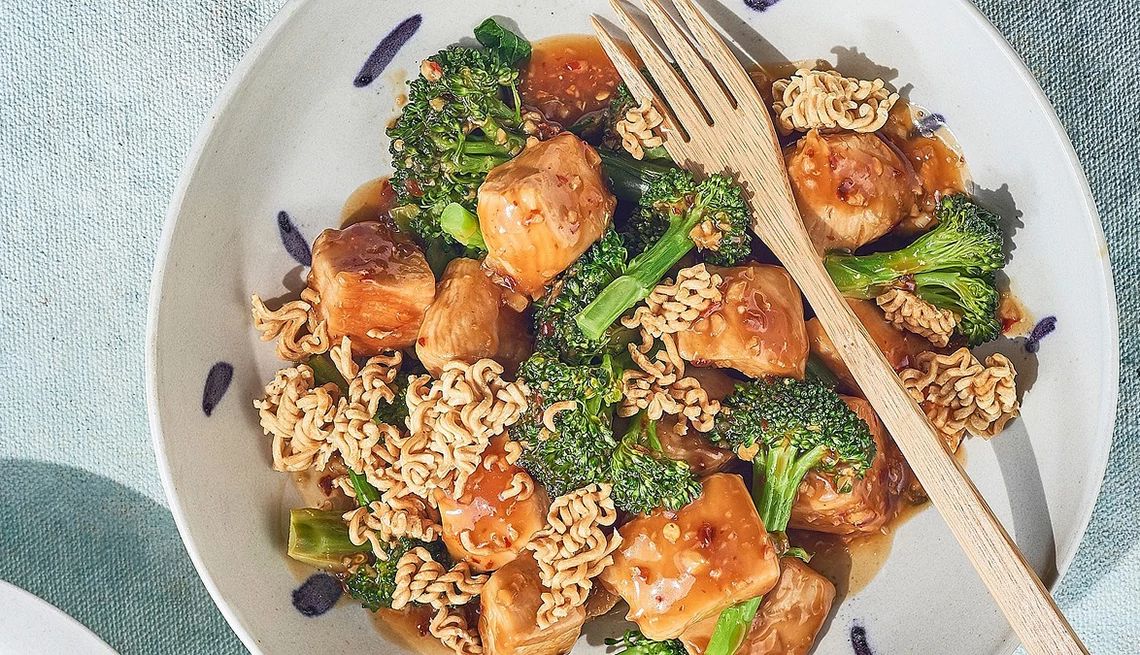





More From Staying Sharp
Whip Up a Protein-Rich Dessert
Who says treats can’t be nutritious?
Omega-3 Fatty Acids May Help the Brain
Nutrients in fish can help protect against cognitive decline
Sprinkle on Some Chia Seeds
Tiny yet mighty, they’re packed with nutrients